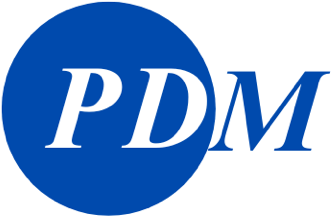September 23, 2025
by PDM STAFF
Understanding Key Features and Applications
When it comes to electrical distribution, choosing the right transformer is critical to performance, safety, and cost-efficiency. Two commonly used transformer types—dry-types and padmounts—serve distinct purposes depending on the application, environment, and infrastructure requirements. Here’s a breakdown of the key differences between these two transformer types and where each one is best suited.
What is a Dry-Type Transformer?
Dry-type transformers use air as the cooling medium and do not contain any liquid insulation. The windings and core are cooled by natural air circulation or forced air ventilation. These transformers are typically housed indoors, in clean, dry, and well-ventilated environments.

Key Advantages:
- Safety: No risk of oil leakage and minimal fire hazard due to lack of combustible fluids.
- Low Maintenance: Requires less routine maintenance since there are no fluids to test or replace.
- Environmentally Friendly: Ideal for sensitive areas like schools, hospitals, and commercial buildings.
- Compact and Quiet: Designed to operate quietly and fit into limited spaces.
Ideal Applications: Indoor facilities, commercial buildings, industrial plants, and locations where safety and air quality are a concern.
What is a Padmount Transformer?
Padmount transformers are oil-filled, outdoor-rated transformers that sit on a concrete pad and are housed in a secure metal cabinet. They are designed for underground distribution systems and are commonly found in neighborhoods, campuses, and industrial parks.

Key Advantages:
- High Power Capacity: Capable of handling larger loads over longer distances.
- Weather Resistant: Built to withstand harsh outdoor conditions.
- Tamper-Proof Design: Lockable cabinets and grounded enclosures ensure safety and security in public areas.
- Cost-Effective Utility Distribution: Commonly used by utilities for efficient, large-scale distribution.
Ideal Applications: Residential subdivisions, commercial developments, utility networks, and any outdoor setting requiring underground distribution.
Choosing the Right Transformer for Your Project
The choice between a dry-type and a padmount transformer depends on factors such as installation location, environmental conditions, power requirements, and maintenance preferences. Dry-type transformers are optimal for indoor, low-to-medium voltage needs where safety and environmental considerations are paramount. Padmount transformers, on the other hand, are best for outdoor use in higher voltage applications requiring durability, security, and accessibility.
At PDM Power and Data Management, we specialize in helping our clients select, design, manufacturer and install the right transformer for their specific needs. Whether you’re designing a commercial facility or a large-scale utility network, our team offers decades of experience and reliable high-quality products to keep your power systems running smoothly.
What sets us apart is our ability to deliver quality transformers in 9 weeks—compared to some in the industry quoting 50 – 120 weeks. This helps to keep your project on schedule and on budget. We combine a consultative, service-driven approach with responsive support and fast turnaround times to meet the demands of today’s fast-paced infrastructure projects.
Need help deciding which transformer is right for your application? Contact us today to speak with one of our experts.

